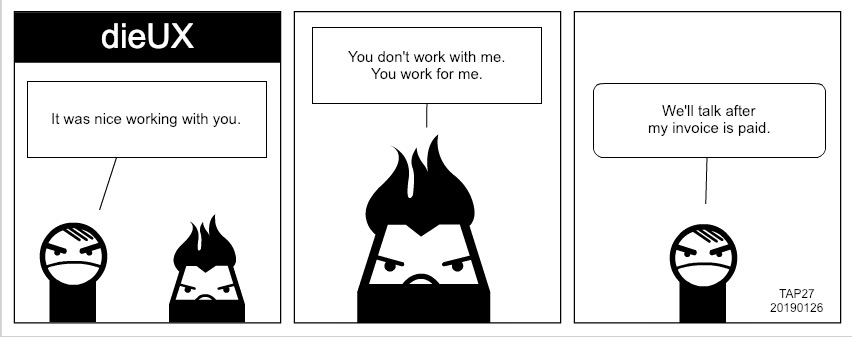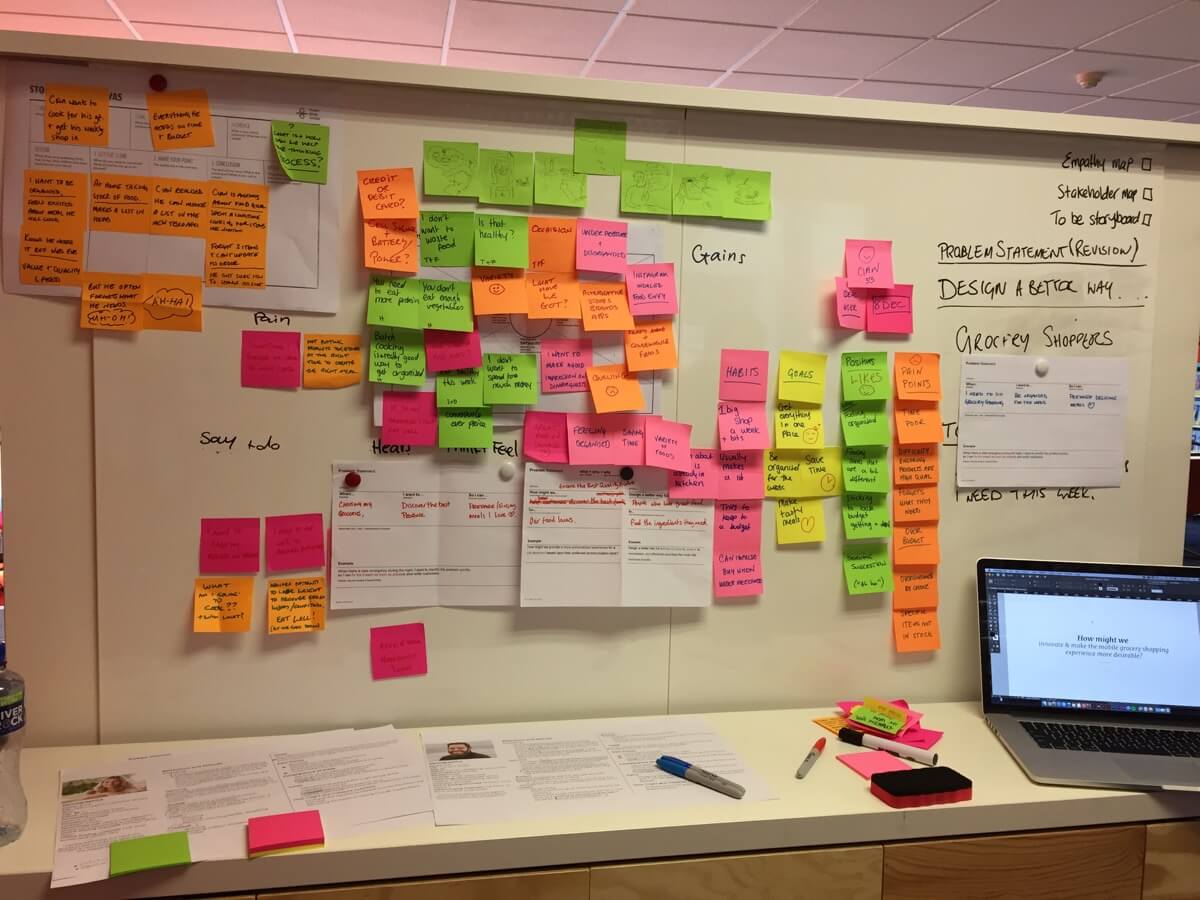☰ Navigate this post:
Published January 26, 2019
Learning Objectives
This blog post sets out with others to meet the following learning objective:
| Learning Objective 5 |
|---|
Blog post(s) and associated artefacts describing and demonstrating:
a concluding reflective blog post detailing the individual contribution of the student, what they learned and how well the team functioned. |
Project background
| Area | Detail |
|---|---|
| Project Outcomes |
This project aims to develop our research and to design skills including:
|
| The team |
My student colleagues are:
|
| Topic |
The mobile Tesco grocery shopping application: |
| Final Prototype |
Open the Axure in your browser You can save the link to your mobile device home screen and launch it as an “app”. |
Teamwork and collaboration
A temporary team must follow our enterprise aims and objectives. A rapport supports healthy conflict.
There was no personality clash – only a personality sitting less comfortably within a collaborative effort. And we concluded conflicts by discussing freely, showing respect, and finding meaningful compromises referencing research. Healthy conflict inspires learning and challenges bias.
Individual team input and output contrasted. This is no sleight. Not everyone is a natural co-worker. Successful legal, clinical, and visual consultant personalities may perform best in isolation. We can encourage them to learn or mimic team empathy with very basic team-skills training to promote their creative and leadership strengths.
I applaud the update to inclusive language between our first class presentation and the last from, “me” and “I” to, “we”. It demonstrates team belonging. It’s what a team needs.
Roles
We were instructed to step out of established roles and perform new ones. Expediencies of resource, time, and schedules negated that.
I set up our collaborative Google Drive and Trello to support our collaboration – not as a manager and only to help us to follow our pathways. Without using it, we seldom followed the same direction and risked replicating or worse, negating effort. We each gave a push at some stage.
Ethics
We observed common rules of team conduct and collaboration: giving space and time to our inputs.
During research, ethics were considered and demonstrated throughout our recruitment and management of participants from our Research Plan to invitations, scripts, and requesting consent informing:
- A background to the research
- The voluntary nature of participation
- The right to dignity and comfort
- The right to ask questions and receive answers
- The right to withdraw
- Anonymity, data management, and sharing
We gave recruits freedom of thought, movement, and expression. By example, I was frustrated with garnering no uptake of the intervention survey during field research. I had researched my approaches and was confident of them. Pre-research assured that rejection of the research is not a rejection of the researcher. People are free to choose and for us to attract their interest. I did not obstruct them. They were free to pass without harassment.
Research
Unable to access the Tesco enterprise, in days we researched requirements from public areas that may match Tesco’s own? Any enterprise suffering a paucity of resources can research their customers and competitors. And everyone is a researcher.
Mary’s segmentation of our data into two believable personas was interesting. Watching “over her shoulder”, I discovered it is a similar technique to that used in Learning Design to understand learners’ needs, preferences, and styles giving me greater confidence to analyse research in the UX paradigm.
Product
In spite of poor availability and collaborative differences we produced an initial prototype from one workshop. The core concept failed in testing. And that was fine – it is what testing is for. Our final project prototype challenges accepted search – select – configure patterns. Ad-hoc evaluations have been positive. We can be pleased with that.
Mood board
Karen’s mood board contains imagery from materials promoting an emotional involvement with food and groceries. Green features as the colour of life, renewal, nature, energy, and ambition (Bourn 2011). That matches our team, too.
Summary
Let’s stay positive should be emblazoned on our team banner motto. We challenged an established UI pattern under challenging circumstances. And it’s not all bad.

References
Bourn, J. (2011, January 25). Color Meaning: Meaning of the Color Green. Retrieved January 22, 2019, from https://www.bourncreative.com/meaning-of-the-color-green/
Navigate this post
Word count less figures, captions, and navigation: 1076

